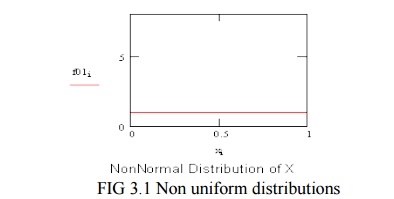Chapter: Communication Theory : Random Process
Central Limit Theorem
CENTRAL LIMIT THEOREM:
In probability theory, the central limit theorem (CLT) states
that, given certain conditions, the arithmetic mean of a sufficiently large
number of iterates of independent random variables, each with a well-defined expected
value and well-defined variance, will be approximately normally distributed.
The
Central Limit Theorem describes the characteristics of the "population of
the means" which has been created from the means of an infinite number of
random population samples of size (N), all of them drawn from a given
"parent population". The Central Limit Theorem predicts that
regardless of the distribution of the parent population:
[1] The mean
of the population of means is always equal to the mean of the parent population
from which the population samples were drawn.
[2] The
standard deviation of the population of means is always equal to the standard
deviation of the parent population divided by the square root of the sample
size (N).
[3] The
distribution of means will increasingly approximate a normal distribution as
the size N of samples increases.
A
consequence of Central Limit Theorem is that if we average measurements of a
particular quantity, the distribution of our average tends toward a normal one.
In addition, if a measured variable is actually a combination of several other
uncorrelated variables, all of them "contaminated" with a random
error of any distribution, our measurements tend to be contaminated with a
random error that is normally distributed as the number of these variables
increases.Thus, the Central Limit Theorem explains the ubiquity of the famous
bell-shaped "Normal distribution" (or "Gaussian
distribution") in the measurements domain.
Examples:
• Uniform distribution
• Triangular distribution
• 1/X distribution
• Parabolic distribution
• CLT Summary
• more statistical fine-print
The
uniform distribution on the left is obviously non-Normal. Call that the parent
distribution.

To
compute an average, Xbar, two samples are drawn, at random, from the parent
distribution and averaged. Then another sample of two is drawn and another
value of Xbar computed. This process is repeated, over and over, and averages
of two are computed. The distribution of averages of two is shown on the left.

Repeatedly
taking three from the parent distribution, and computing the averages, produce
the probability density on the left.

Related Topics